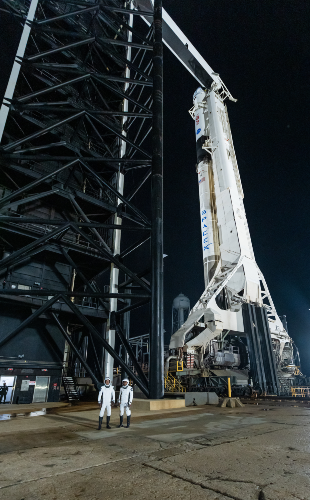Last year, SpaceX broke its own launch record, sending 31 rockets into space and deploying thousands of satellites in the process. The Hawthorne-based company also made significant progress on new initiatives like its Starlink global broadband system and its massive Starship spacecraft, which it aims to launch into orbit for the first time later this year.
With so much activity, the next 12 months promise to be as busy as any SpaceX has had. Here’s a look at where some of the company’s most significant projects stand.
Starship enterprise
Starship enterprise
After a few failed attempts, SpaceX last year managed to launch the rocket 10 kilometers into the air and successfully land it back at the company’s testing site in Boca Chica, Texas.
This year, SpaceX aims to conduct the spacecraft’s first orbital test flight, which should go a long way toward determining the readiness of the Starship for future missions into space.
The Starship is a key part of future growth plans for SpaceX. Not only could the vehicle facilitate human spaceflight to the moon and Mars, but it could also be used to deploy large numbers of satellites and bring massive volumes of cargo into space.
Production of the spacecraft hasn’t been without hiccups; it took months for SpaceX to successfully land Starship prototypes, and in November, SpaceX Chief Executive Elon Musk reportedly warned employees that delays in production of the rocket’s engines had placed the company on the verge of bankruptcy.
Still, SpaceX is pressing on with the program and in January revealed a prototype launch tower for the spacecraft, which Musk said will eventually be used to “catch” rockets returning to Earth.
Starlink expansion
Starlink expansion
The company eventually plans to deploy over 10,000 satellites in service of the Starlink project, which has been advertised as a low-latency, high-speed network available to internet users in rural areas in particular.
The service currently has nearly 150,000 users, though the company has struggled to keep up with demand for its network due in part to supply shortages, which have delayed production of the terminals necessary for users to receive a signal from the company’s satellites.
Crewed missions
Crewed missions
In the year ahead, SpaceX is planning a launch a program with space tourism company Axiom Space Inc., which will take three civilians to the International Space Station. With liftoff scheduled for March, the trip is expected to be the first fully private mission to the space station.
Carbon capture
Carbon capture
The statement is far from a concrete plan, but it came less than a year after the announcement of an XPrize Foundation contest set to award $100 million donated by Musk’s charitable foundation to students, researchers and entrepreneurs with plans to develop carbon removal systems that could potentially mitigate the effects of climate change.
A timeline for the development of such a carbon capture system is unclear, but Musk noted on Twitter that the technology “will also be important” for the company’s planned missions to Mars.

